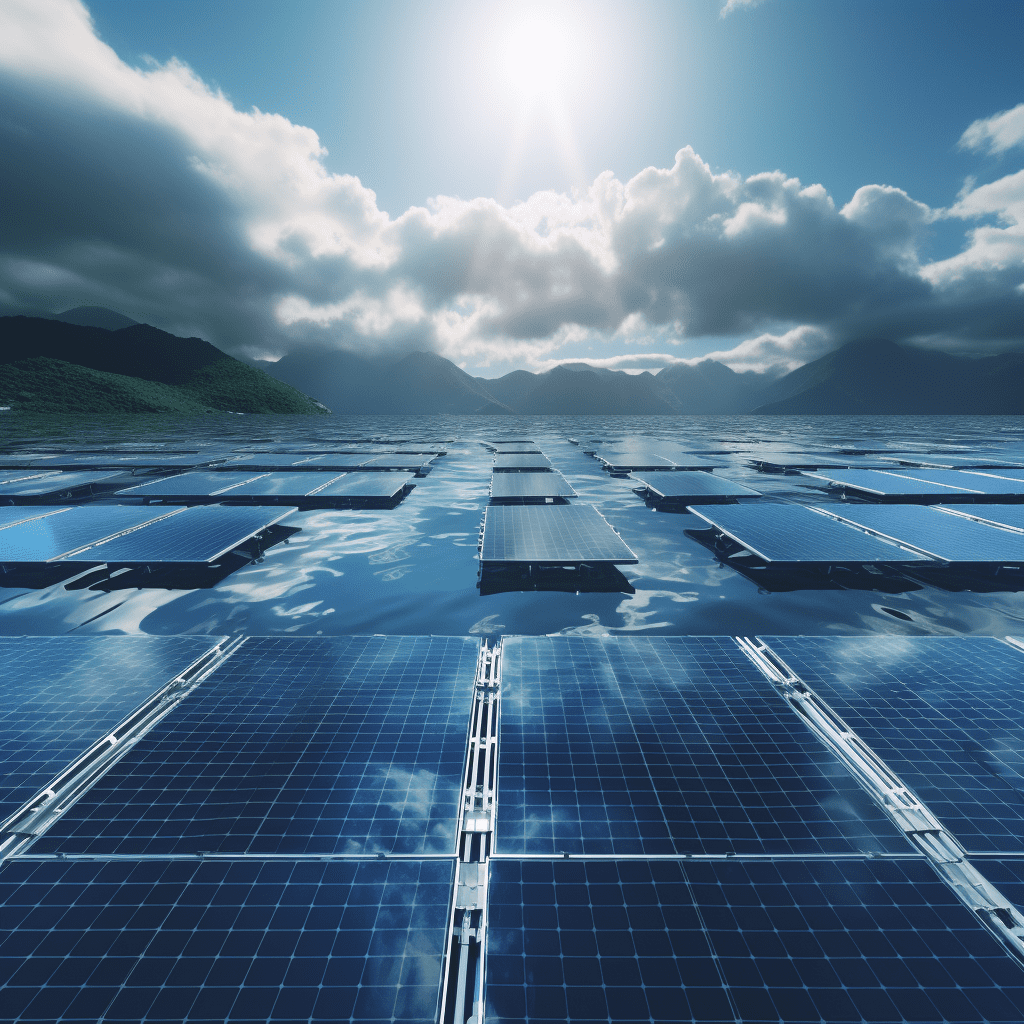The NTPC has announced a significant new initiative with its floating solar power plant project, which aims to enhance sustainable energy production in India. This innovative project will harness solar energy on water bodies, contributing to renewable energy targets while minimizing land use and environmental impact.
What is the NTPC floating solar power plant project and its scope?
The NTPC floating solar power plant project involves the installation of a large-scale photovoltaic system on water bodies, specifically designed to generate renewable electricity while conserving land resources. The latest project, located at the Sipat reservoir, includes a capacity of 26 MW, showcasing NTPC’s commitment to expanding its renewable energy portfolio.
Chart: Overview of NTPC Floating Solar Power Plant
| Project | Capacity (MW) |
|---|---|
| NTPC Sipat | 26 |
| NTPC Ramagundam | 100 |
| Total Floating Solar Capacity | 222 |
How will the floating solar power plant function?
The floating solar power plant operates by utilizing buoyant platforms that support photovoltaic panels on water surfaces. These panels convert sunlight into electricity, which is then transmitted to the grid. The design minimizes evaporation from water bodies and reduces land use, making it an environmentally friendly solution.
Chart: Operational Mechanism of Floating Solar Plants
| Step | Description |
|---|---|
| Sunlight Capture | PV panels absorb sunlight |
| Electricity Generation | Conversion of sunlight into electrical energy |
| Grid Integration | Power fed into the electrical grid |
What advantages does floating solar technology provide?
Floating solar technology offers several key benefits:
- Reduced Land Use: By utilizing water surfaces, these systems conserve valuable land resources for agriculture or natural habitats.
- Lower Evaporation Rates: The panels help reduce evaporation from water bodies, conserving water resources.
- Enhanced Efficiency: The cooling effect of water can improve the efficiency of solar panels compared to those installed on land.
Chart: Benefits of Floating Solar Technology
| Benefit | Description |
|---|---|
| Land Conservation | Minimizes land use for solar installations |
| Water Conservation | Reduces evaporation losses |
| Improved Efficiency | Enhances panel performance due to cooling effects |
How does this initiative align with India’s renewable energy objectives?
The NTPC floating solar power project aligns with India’s ambitious renewable energy goals, including a target of achieving 500 GW of non-fossil fuel capacity by 2030. By investing in innovative technologies like floating solar, NTPC contributes to diversifying India’s energy mix and reducing carbon emissions.
Chart: India’s Renewable Energy Targets
| Target | Goal |
|---|---|
| Total Renewable Capacity | 500 GW by 2030 |
| Current Installed Capacity | Approximately 150 GW |
What challenges must NTPC address for successful implementation?
While promising, several challenges could affect the successful implementation of the floating solar power plant:
- Technical Challenges: Ensuring stability and durability of floating structures in varying weather conditions.
- Regulatory Hurdles: Navigating environmental regulations and obtaining necessary permits can delay projects.
- Financial Investment: Securing funding for large-scale installations can be a barrier.
Chart: Challenges Facing Floating Solar Projects
| Challenge | Description |
|---|---|
| Technical Feasibility | Need for robust engineering solutions |
| Regulatory Compliance | Lengthy permitting processes |
| Funding | High initial costs associated with installation |
What impact will the floating solar power plant have on local communities?
The implementation of a floating solar power plant can have several positive impacts on local communities:
- Job Creation: The construction and maintenance of these facilities create job opportunities.
- Energy Access: Increased renewable energy generation can lead to more stable electricity supply for local residents.
- Environmental Benefits: Reduced carbon emissions contribute to cleaner air and a healthier environment.
Chart: Community Impact Overview
| Impact | Description |
|---|---|
| Job Opportunities | Employment during construction and operation |
| Improved Energy Access | More reliable electricity supply |
| Environmental Improvement | Reduction in local carbon emissions |
What future developments are planned for floating solar energy in India?
Looking ahead, India plans to expand its investment in floating solar technology significantly. NTPC has already initiated several projects across various states, with plans to increase capacity further as part of its commitment to renewable energy development and sustainability.
Chart: Future Plans for Floating Solar Projects
| Project | Planned Capacity (MW) |
|---|---|
| Additional Projects | 200 MW across various locations |
| Research and Development | Focus on improving efficiency and reducing costs |
Latest News
NTPC has recently unveiled plans for a new floating solar power plant at Sipat reservoir, contributing an additional 26 MW to its growing portfolio of renewable energy projects. This initiative reflects India’s commitment to expanding sustainable energy sources while addressing environmental concerns related to traditional fossil fuels.
Editor Comment
“NTPC’s advancement into floating solar technology signifies a transformative step toward sustainable energy solutions in India. By leveraging innovative approaches to harnessing renewable resources, we are not only addressing our current energy needs but also paving the way for a cleaner, greener future.”
FAQ Section
Q1: What is a floating solar power plant?
A1: A floating solar power plant utilizes buoyant structures on water bodies to support photovoltaic panels that generate electricity from sunlight.Q2: How much capacity does NTPC’s new floating solar project at Sipat have?
A2: The new floating solar project at Sipat has a capacity of 26 MW.Q3: What are some benefits of using floating solar technology?
A3: Benefits include reduced land use, lower evaporation rates from water bodies, and improved efficiency due to cooling effects from water.



